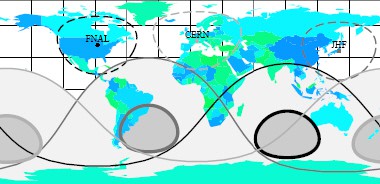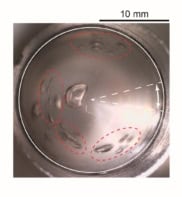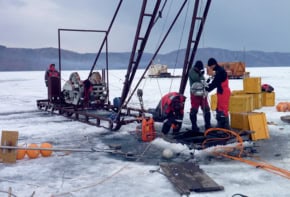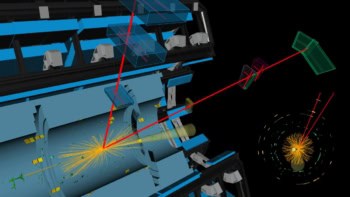A physicist in the US has proposed using a beam of neutrinos to measure the density of the Earth's core. Walter Winter of the Institute for Advanced Study in Princeton says that neutrinos could provide information about the Earth that is not available with other techniques (arXiv.org/abs/hep-ph/0502097). Although measurements of the seismic waves produced by earthquakes can be used to reconstruct a profile of the Earth's interior, they provide only indirect information.

Neutrinos come in three flavours — electron, muon and tau neutrino. They are also electrically neutral and only interact weakly with other particles, which means that they can pass through thousands of kilometres of matter without being absorbed. However, neutrinos can change flavour or “oscillate” as they pass through matter with, for instance, electron neutrinos oscillating into muon neutrinos and so on. Since the amount of oscillation depends on the electron density in the matter, and since the electron density is directly related to the overall matter density, it should be possible to determine the matter density of the Earth by making accurate measurements of the oscillations.
Winter proposes sending a beam of neutrinos from an accelerator tens of thousands of kilometres through the Earth to a detector on the other side of the globe. In principle, the beam would travel from a proposed “neutrino factory” in the northern hemisphere to a 50,000 ton iron detector in the southern hemisphere. For example, a beam could be sent from CERN in Switzerland through the inner core of the Earth to a detector in New Zealand (see figure).
The first “long-baseline” neutrino oscillation experiment was performed in 1999, when neutrinos were sent through the ground from the KEK laboratory in Japan to the SuperKamiokande detector 250 kilometres away. Plans are also underway to send beams from Fermilab near Chicago to the Soudan lab in Minnesota, 710 kilometres away, and from CERN to the Gran Sasso National Laboratory in Italy, 730 kilometres away.
The main challenge would be building the neutrino factory with a vertical decay tunnel so that the beams passed down through the centre of the Earth. Existing neutrino beams are only a few degrees below the horizontal, whereas the beam that Winter is proposing would have to travel directly downwards. However, he is confident that such an experiment could begin by 2035.
In 2003, physicists at KEK also proposed using neutrino beams to destroy nuclear weapons and last year, an astrophysicist in the US suggested using one of Jupiter’s moons to detect neutrinos.



